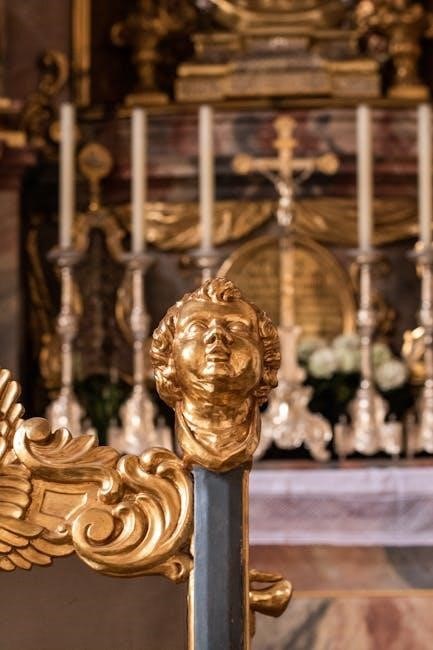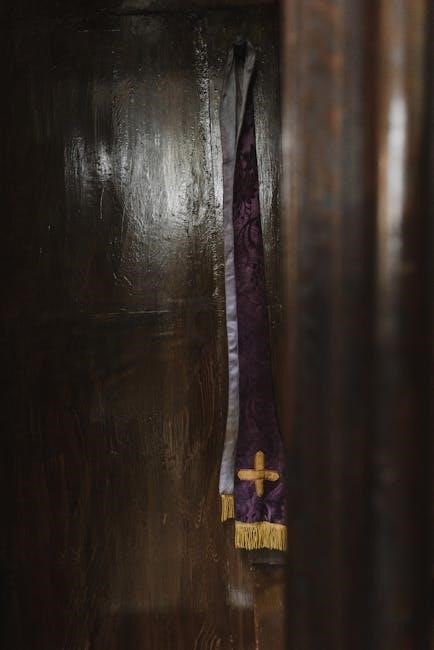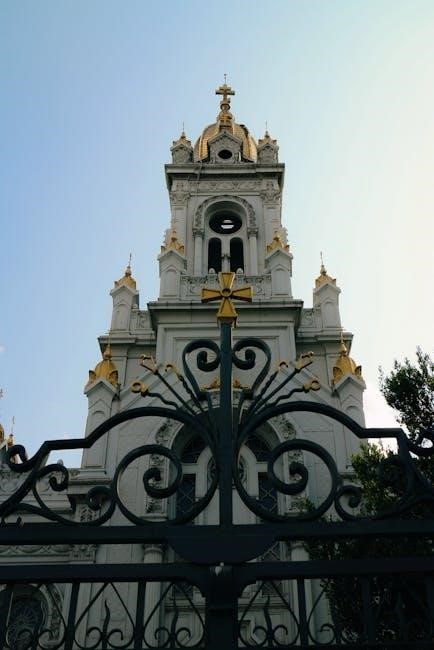John Marco Allegro, a biblical scholar and Dead Sea Scrolls expert, gained fame for his controversial 1970 book, The Sacred Mushroom and the Cross, which explores early Christianity’s connection to psychoactive fungi, sparking intense debate in religious and academic circles.
1.1. Biography of John Marco Allegro
John Marco Allegro was born on February 17, 1923, in London. He served in the Royal Navy and later studied at the University of Manchester, developing expertise in archaeology and biblical studies. Allegro became known for his work on the Dead Sea Scrolls and his controversial 1970 book, The Sacred Mushroom and the Cross, which challenged traditional religious narratives. His theories sparked intense debate, leading to the end of his academic career. He passed away on February 17, 1988.
1.2. The Significance of “The Sacred Mushroom and the Cross”
John Marco Allegro’s The Sacred Mushroom and the Cross is a provocative work challenging traditional views of Christianity’s origins. It proposes that early Christian rituals and symbols were linked to ancient fertility cults and the use of psychoactive mushrooms, offering a radical reinterpretation of religious history. The book’s controversial theories have sparked intense debate, making it a landmark in alternative religious scholarship.

The Main Thesis of the Book
Allegro’s book argues that early Christianity emerged from ancient fertility cults using psychoactive mushrooms, proposing a radical connection between these fungi and the origins of Christian rituals.
2.1. The Connection Between Early Christianity and Psychoactive Fungi
Allegro proposes that psychoactive fungi, like the Amanita muscaria, influenced early Christian rituals and symbolism, suggesting these substances were central to ancient fertility cults that later shaped Christianity. He argues that the Eucharist and other practices may symbolize mushroom consumption, linking these fungi to divine experiences and challenging traditional interpretations of religious origins.
2.2. The Role of the Sacred Mushroom in Religious Symbolism
The sacred mushroom, particularly the Amanita muscaria, is portrayed as a divine emblem, symbolizing spiritual rebirth and transcendence. Its unique appearance and consciousness-altering effects made it a potent symbol in ancient religions, linking it to fertility, divinity, and eternal life. Allegro suggests this symbolism influenced early Christian imagery, embedding it deeply within religious traditions and practices.
The Use of Psychoactive Mushrooms in Ancient Cults
Psychoactive mushrooms, like Amanita muscaria, were central to ancient cult rituals, inducing altered states of consciousness and spiritual experiences, symbolizing divine connection and transcendence.
3.1. Amanita Muscaria and Its Historical Use
Amanita muscaria, a psychoactive mushroom, has been historically used in ancient rituals for its hallucinogenic properties, inducing spiritual experiences. Its bright red cap and white spots made it a symbol of fertility and divine power in Near Eastern cults, linking it to early religious practices and the embodiment of sacred imagery in ancient myths and symbolism.
3.2. The Influence of Fungi on Religious Rituals
Psychoactive fungi, like Amanita muscaria, played a significant role in ancient religious rituals, inducing spiritual experiences and visions. Their use in fertility rites and symbolic practices linked them to divine power, influencing early religious ceremonies and the development of sacred traditions. Allegro’s work highlights their role in shaping rituals and symbolic representations in ancient cults and early religious practices.

Linguistic and Etymological Analysis
Allegro’s work delves into the linguistic roots of religious terms, uncovering connections between ancient languages and fungal symbolism. His etymological studies reveal how early religious language encoded references to sacred plants and fertility cults, tracing the origins of religious symbolism through linguistic analysis.

4.1. The Etymology of Religious Terms Related to Mushrooms
Allegro examines the linguistic origins of religious terms, linking them to fungal symbolism. He traces words like “Christ” and “church” to ancient roots tied to mushrooms, suggesting these terms encode references to sacred plants and rituals. His etymological analysis proposes that early religious language was deeply intertwined with the symbolism of psychoactive fungi, particularly the Amanita muscaria, reflecting their role in ancient cultic practices.
4.2. The Language of Religion Linking to Ancient Cults
Allegro explores how religious terminology and symbolism are rooted in ancient fertility cults, with linguistic patterns encoding references to sacred plants and rituals. He argues that early religious language, often shrouded in metaphor, reflects the influence of psychoactive fungi, particularly the Amanita muscaria, in shaping spiritual narratives and practices across cultures.

The Ancient Fertility Cults of the Near East
Ancient Near Eastern fertility cults worshipped deities associated with agriculture and sexuality, often incorporating sacred plants and rituals to ensure prosperity and divine connection, influencing early religious practices.
5.1. The Structure and Practices of Fertility Cults
Fertility cults in the Near East were organized around rituals celebrating deities tied to agriculture and sexuality. Practices included sacred plant use, symbolic rites, and communal ceremonies to ensure fertility and prosperity. These cults often incorporated psychoactive substances, like mushrooms, to induce spiritual experiences, blending religious and natural cycles in their worship and communal practices.
5.2. The Connection Between Fertility Cults and Early Christianity
Allegro posits that early Christianity emerged from ancient Near Eastern fertility cults, which revered natural cycles and used psychoactive fungi like Amanita muscaria in rituals. These cults’ symbols and practices, such as sacred plant use, influenced Christian imagery and rites, suggesting a continuity between pagan fertility traditions and the origins of Christian worship and belief systems.

The Sacred Mushroom as a Symbol of Divinity
The sacred mushroom, as a divine emblem, represented a bridge between the earthly and the divine, embodying spiritual power and transcendence in ancient religious symbolism.
6.1. The Mushroom as a Divine Emblem
The mushroom symbolized divinity, serving as a potent emblem of spiritual power and transcendence. Its unique shape and transformative properties made it a sacred representation of divine connection, linking humanity to the divine realm. This imagery was central to ancient religious symbolism, reflecting the profound reverence for nature’s mysterious and life-altering phenomena.
6.2. The Embodiment of Divinity Through Sacred Plants

Sacred plants, particularly the psychoactive mushroom, were seen as embodiments of divine power. These organisms facilitated spiritual experiences, allowing individuals to connect with the divine. Allegro argued that early religious practices centered on such plants, which were believed to hold the essence of divinity, thus bridging the earthly and spiritual realms through their use in rituals and ceremonies.
The Secret Meaning of Biblical Myths
Allegro decoded biblical myths as encoding references to fertility cults and sacred plants, suggesting they conceal ancient rituals and symbolic meanings tied to early Christian origins.
7.1. Allegorical Interpretations of Biblical Stories
Allegro argued that biblical stories are layered with symbolic meanings, suggesting they encode references to psychoactive fungi and ancient fertility rituals. He contended that tales like the Garden of Eden and the resurrection were allegories for spiritual experiences induced by sacred plants, rather than historical events. This interpretation ties biblical narratives to early Christian origins and cultic practices.
7.2. The Hidden Codes in Religious Texts
Allegro proposed that religious texts contain hidden codes and symbols tied to psychoactive fungi, revealing a deeper, esoteric meaning. He argued that linguistic patterns and etymology in biblical terms link to mushrooms, suggesting a concealed narrative about their role in early religious practices. This theory challenges traditional interpretations, offering a radical perspective on the origins of religious symbolism and language.

The Living Power of Cultic Rites and Symbols
Allegro reveals how cultic rites and symbols maintain religious power, evolving over time while preserving ancient practices and beliefs, ensuring their enduring influence across generations and cultures.
8.1. The Role of Rituals in Maintaining Religious Power
Allegro emphasizes that rituals preserve religious traditions, providing a psychological and communal bond. These practices, often tied to sacred symbols, reinforce beliefs and maintain authority, ensuring the continuity of religious influence across generations and cultural shifts.
8.2. The Evolution of Symbols in Religious Contexts
Allegro explores how religious symbols, like the sacred mushroom, have evolved from ancient fertility cults to modern religious practices. These symbols, deeply rooted in linguistic and cultural traditions, continue to carry profound spiritual meanings, reflecting humanity’s enduring quest for divine connection and understanding.
The Controversy Surrounding the Book

Allegro’s book sparked intense backlash from scholars and religious groups, questioning its unconventional theories and lack of concrete evidence, leading to widespread dismissal and damage to his academic reputation.
9.1. Academic and Religious Reactions to Allegro’s Theory
Scholars dismissed Allegro’s theory as lacking evidence, with many criticizing his interpretations of linguistic and historical data. Religious groups rejected his claims as blasphemous, particularly his suggestion that Jesus was a metaphor for a mushroom. The backlash severely damaged his academic reputation, labeling him a controversial figure in both religious and scholarly circles.
9.2. Criticisms and Debates Over the Book’s Claims
Allegro’s theories were met with widespread skepticism due to lack of concrete evidence and flawed linguistic analyses. Critics argued his interpretations were speculative and ignored historical context. Experts like Carl Ruck and John Rush disputed his claims about mushroom use in ancient rituals, calling his conclusions unfounded and misleading. The book’s dismissal of established religious frameworks further fueled opposition from scholars and theologians alike.
The Legacy of “The Sacred Mushroom and the Cross”
Despite criticism, Allegro’s work remains a provocative exploration of religion’s origins, inspiring debate on psychoactive substances’ role in sacred traditions and early Christianity’s roots.
10.1. The Impact on Religious and Historical Studies
The Sacred Mushroom and the Cross challenged traditional religious narratives, sparking debates on Christianity’s origins and the role of psychoactive substances in sacred rituals. While controversial, it influenced interdisciplinary studies, prompting reevaluations of historical and religious texts, and remains a provocative reference in discussions on ancient cults and their legacy in modern spirituality.
10.2. The Book’s Influence on Modern Theories of Religion
The Sacred Mushroom and the Cross has inspired modern theories linking psychedelics to religious experiences, influencing studies on entheogens and spirituality. While controversial, Allegro’s ideas have sparked interdisciplinary research, challenging traditional views of religious origins and encouraging new perspectives on the role of psychoactive substances in shaping spiritual practices and cultural narratives.
John Marco Allegro’s The Sacred Mushroom and the Cross challenges traditional religious beliefs, sparking debate about Christianity’s origins and the role of psychoactive substances in spiritual practices.
11.1. Summary of Key Arguments
John Marco Allegro’s work challenges conventional religious views, proposing that early Christianity emerged from ancient fertility cults using psychoactive mushrooms like Amanita Muscaria. He argues that biblical stories are allegorical, encoding references to these practices, and that religious symbolism is deeply tied to natural substances, offering a radical reinterpretation of religious history and its connection to human spirituality and cultural evolution.
11.2. The Enduring Questions Raised by Allegro’s Work
Allegro’s theories prompt profound questions about religion’s origins, the role of psychedelics in spirituality, and the symbolic nature of biblical narratives. His work challenges scholars to reconsider the historical context of Christianity and the potential influence of ancient cultic practices, leaving a legacy of debate on the intersection of religion, culture, and human consciousness that continues to resonate today.